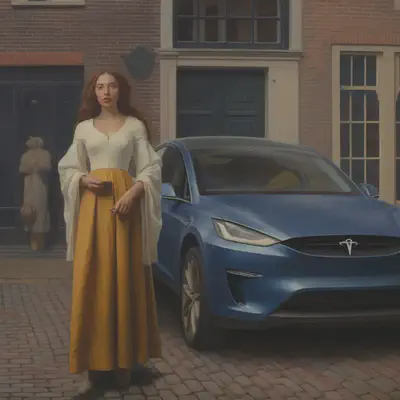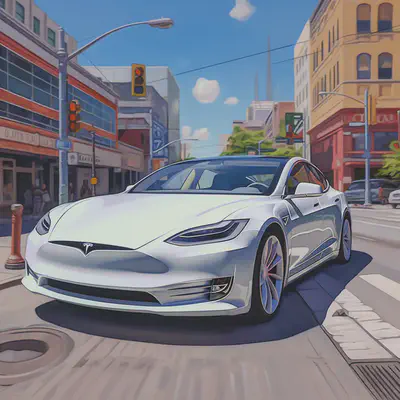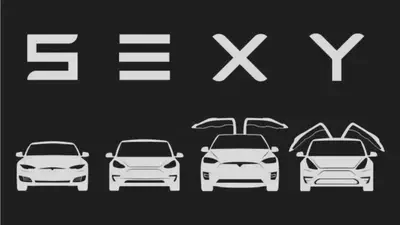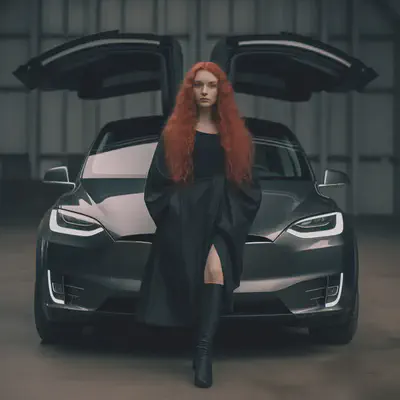EV Makers Net Income Comparisons | Tesla's Visions and Goals
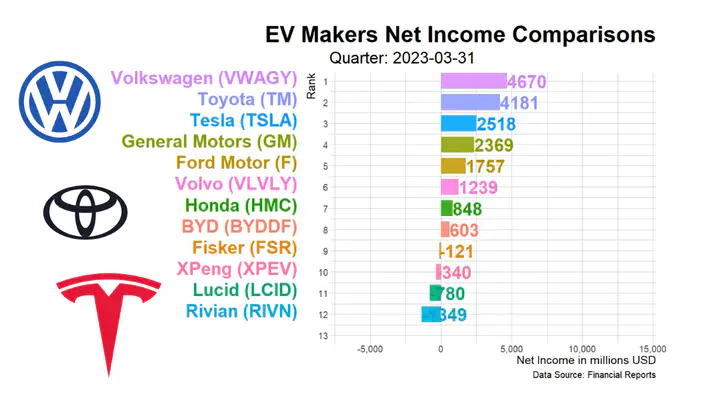
Table of Contents
EV Makers Net Income Comparisons
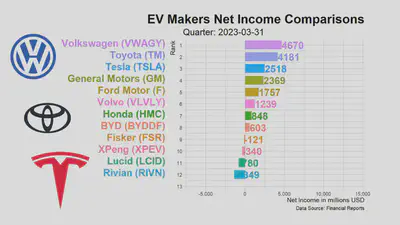
The world is changing. Back in history we ride horses, and then we drive internal combustion engine vehicles, and now, we’re shifting to electric vehicles. In this video, we compare the net income of EV makers over time from the first quarter of 2009 to the first quarter of 2023. The numbers in the animation are all in millions USD. In the first quarter of 2023, EV makers with the highest to lowest net income are as follows: Volkswagen, Toyota, Tesla, General Motors, Ford Motor, Volvo, Honda, BYD, Fisker, Xpeng, Lucid, and Rivian. Notice that not all the EV makers are making money.
Net income, also known as net profit or net earnings, is a key financial metric that represents a company’s total revenue minus its total expenses over a specific period. It is reported on the income statement, which summarizes a company’s financial performance during a given period, such as a quarter or a fiscal year. Positive, stable, and growing net income is crucial to a company’s survival in the long term.
Welcome to Sunfortzone, our goal is to help value investors understand more about their investments. If you want to grow on the path of value investing, please subscribe to our channel and click the like button on the video. Wall streets make money on activities, we, as value investors, make money on inactivities.
Here we would like to recommend a great book called The Intelligent Investor by Benjamin Graham. The book is suggested by value investor Warren Buffet. As Warren Buffet said, Chapters 8 and 20 in this book have been the bedrock of my investing activities for more than 60 years. I suggest that all investors read those chapters and reread them every time the market has been especially strong or weak. The link of the ebook is here, you can read it a little bit for free in the Kindle.
the Present and Future of the Electric Vehicle Industry

The present and future of the electric vehicle industry is promising, with significant growth and transformative potential. Here are some key aspects:
Increasing Adoption
The adoption of EVs has been steadily increasing worldwide. Factors such as government incentives, stricter emissions regulations, improving charging infrastructure, and greater awareness of environmental issues have contributed to the growing popularity of EVs among consumers.
Technological Advancements
The EV industry is witnessing rapid advancements in battery technology, allowing for increased driving ranges and faster charging times. Additionally, innovations in electric drivetrains, materials, and software systems are enhancing the performance, efficiency, and overall user experience of electric vehicles.
Expanding Product Offerings
Major automakers, as well as new entrants, are expanding their EV product offerings to cater to diverse customer needs. This includes the introduction of electric SUVs, crossovers, sedans, and even electric pickup trucks, which will contribute to broader market appeal and increased consumer choice.
Decreasing Costs
The cost of electric vehicles, particularly batteries, has been declining steadily over the years. Economies of scale, technological advancements, and increased production volumes are driving down the prices of EVs, making them more affordable and competitive with internal combustion engine vehicles.
Growing Charging Infrastructure
The development of charging infrastructure is critical for widespread EV adoption. Governments, utility companies, and private entities are investing in the expansion of charging networks, including public charging stations, fast-charging networks, and home charging solutions. This expansion will alleviate range anxiety concerns and further encourage EV adoption.
Sustainability and Environmental Benefits
The transition to electric vehicles plays a crucial role in reducing greenhouse gas emissions and combating climate change. EVs produce zero tailpipe emissions, resulting in improved air quality and reduced dependence on fossil fuels.
Autonomous and Connected Features
The integration of electric vehicles with autonomous driving technology and advanced connectivity features is another area of development. This convergence is expected to revolutionize transportation, improve safety, and enhance the overall efficiency and convenience of electric vehicles.
While the electric vehicle industry has experienced significant growth, challenges remain. These include addressing the limited range of some EV models, establishing a robust and convenient charging infrastructure, managing the environmental impact of battery production and disposal, and further reducing costs to achieve price parity with internal combustion engine vehicles.
Nonetheless, with ongoing technological advancements, supportive government policies, increasing investment, and changing consumer preferences, the electric vehicle industry is poised for continued growth and will likely play a substantial role in the future of transportation.
Tesla’s Visions and Goals
Tesla is the leading EV maker, and its vision and goals can be summarized as follows:
Tesla’s vision
Tesla’s overarching vision is to accelerate the world’s transition to sustainable energy. The company aims to create a sustainable future by developing and promoting electric vehicles (EVs) and renewable energy solutions. Tesla believes that a sustainable energy ecosystem will contribute to reducing greenhouse gas emissions and mitigating climate change.
Tesla’s goals
Electric Vehicles
Tesla’s primary goal is to lead the transition from traditional internal combustion engine vehicles to electric vehicles. The company strives to produce high-performance electric cars that are not only sustainable but also offer superior performance, range, and efficiency compared to conventional vehicles.
Energy Storage
Tesla aims to revolutionize energy storage through its innovative battery technologies. By developing and deploying advanced energy storage solutions, such as the Powerwall and Powerpack, Tesla seeks to enable the widespread adoption of renewable energy sources by providing reliable and scalable storage options.
Renewable Energy Integration
Tesla aims to integrate renewable energy sources, particularly solar energy, into the broader energy infrastructure. Through its subsidiary SolarCity, Tesla offers solar energy solutions for residential, commercial, and utility-scale applications, with a goal to facilitate the transition to clean and sustainable power generation.
Autonomy and Self-Driving Technology
Tesla is actively working on developing autonomous driving technology. The company’s goal is to achieve full self-driving capability, where Tesla vehicles can operate safely and efficiently without human intervention. This technology has the potential to enhance road safety, reduce accidents, and improve transportation efficiency.
Gigafactories and Global Expansion
Tesla’s goal is to establish large-scale manufacturing facilities called “Gigafactories” in key locations worldwide. These factories aim to produce Tesla vehicles, battery cells, and energy storage products at an unprecedented scale, enabling Tesla to meet increasing demand and drive down costs.
Thanks for spending your valuable time with us! If you like our content, please like and subscribe to our channel to get more valuable content. Furthermore, please visit our website for more data-driven insights, and join our Discord server to discuss with other investors.
What is your idea on the EV industry and its main players?
please comment below. We would love to hear your feedback!
